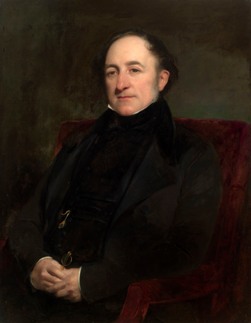 As geologist and science writer Nina Morgan discovers, first impressions do not necessarily reveal all.
As geologist and science writer Nina Morgan discovers, first impressions do not necessarily reveal all.
The private life of Henry de la Beche (1796-1855), the first Director of what is now the British Geological Survey, was more tangled than most. Having inherited an estate in Jamaica on the death of his father in 1801, De la Beche - young, handsome, and in possession of a considerable fortune - settled in Lyme Regis with his mother and her third husband in 1812. He soon became a great favourite among the young ladies in Lyme - a fact immortalised in an anonymous poem, The Lymiad, or Letters from Lyme to a friend in Bath by a Unknown Gentlewoman.
A copy of the original publication, now in the collection of Lyme Regis Museum, consists of a series of eight letters all in verse, about the town of Lyme and it inhabitants as they were in 1818. De la Beche, a yacht-owner and keen sailor, was one of the many inhabitants featured - under an assumed name, of course!
That "blood-red flag" which gaily floats
On the full-swelling breeze, denotes
The Conrad, Sir Fopling Fossil's pride;
He guides the helm, whilst by his side
A damsel young and passing fair
Reclines: her beaming eyes declare
How dear to her Sir Foplings's smile;
His witching converse can beguile
The dullest, saddest, dreariest day;
Can make e'en dark November gay;
He is a most accomplished youth,
That is, if madam Fame speak truth;
But some who know Sir Fopling well,
Inform me he's a F.G.S.
Therefore from this one fact I guess
His knowledge must be great - but now
Far other is his theme I trow,
As o'er that fair one gently bending
Whilst she a rapt attention lending,
Smooth glides the Conrad o'er the sea;
And entre nous I'd rather be
Where a less attractive helmsman guide
The rudder's power; for ill betide
The bark to Lover's care consign'd
Whether coincidence of not, in the same year that the Lymiad appeared, De la Beche succumbed to charms of - and married - Letitia Whyte (1801-1844), daughter of Captain Charles Whyte of Loughbrickland, Co. Down, Ireland. Their daughter Elizabeth, known as Bessie, was born in 1819. But the marriage was not a success. De la Beche went on a solo trip to Jamaica to attend to estate business in November 1823, and on his return discovered that Letitia had left him for another man.
In 1825 Letitia requested a legal separation on the grounds that "the union proved to be of the most unhappy nature: the treatment which Lady De la Beche received at the hands of her husband being such as to render it impossible for her to live with him." The pair were divorced in 1826, and Letitia went to live with Major-General Henry Wyndham, an illegitimate son of the Earl of Egremont.
For his part, De la Beche admitted to 'hasty expressions' and said he 'ought to have trusted entirely [her] own high sense of honour in many cases'. But a footnote to The Lymiad suggests another reason for the marriage breakdown. This describes De la Beche as:
"...a very F.G.S. I have since understood is this famed youth. He is married, and his love-tales are forgotten. Talk of anything besides an Ichthyosaurus, an Ornithorhynchus paradoxus or a Pentacrinite and the youthful geologist will take a comfortable nap in his chaise-longue."
Perhaps Letitia had a point. Surely having to play a constant second fiddle to a dinosaur in your husband's affections is enough to sour any marriage - unless, of course, the wife is a palaeontologist herself!
Acknowledgement
Sources for this vignette include New insights into the early life of Henry Thomas De la Beche (1796 - 1855) by Tom Sharpe, which is included as the introduction to the booklet A journal of Sir Henry de la Beche, Pioneer Geologist written in his own hand, edited by Richard Morris and published by the Royal Institution of South Wales, 2013 (ISBN 978-0-956378446), and from which the lines from The Lymiad relating to Henry de la Beche used here are quoted. Other sources include Henry de la Beche: observations on an observer by Paul. J. McCartney, Friends of the National Museum of Wales, Cardiff, 1977 (ISBN 0 7200 0201 X); and the websites:
www.lymeregismuseum.co.uk/in-the-museum/the-lymiad and
austenonly.com/2010/03/21/news-of-the-lymeiada-poem-about-regency-lyme-regis/
- If the past is the key to your present interests, why not join the History of Geology Group (HOGG). For more information and to read the latest HOGG Newsletter visit the HOGG website at: www.historyofgeologygroup.co.uk, where you’ll also find abstracts for the talks and posters presented at the Conference on Geological Collectors and Collecting, April 2011 available free to download as a pdf file.
*Nina Morgan is a geologist and science writer based near Oxford.